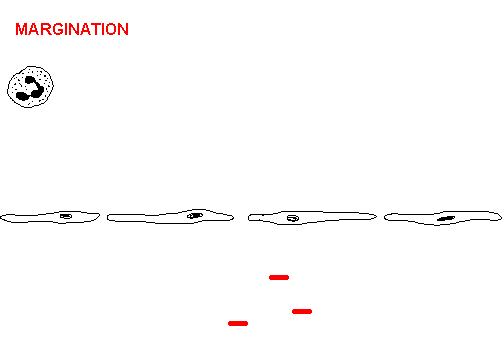This animation demonstrates the actions of neutrophils in the acute inflammatory process. These series of events in the process of inflammation are mediated by:
Selectins: molecules on leukocytes (L-selectin) and endothelium (E-selectin, P-selectin) act as receptors to provide loose binding for rolling.
ICAM-1: intercellular adhesion molecule 1 provides more firm adhesion of the neutrophil, via integrins on neutrophil surfaces, to the endothelium.
CD31: this cell to cell adhesion molecule aids in diapedesis.
C5a and LTB4: chemotaxis is aided by the C5a component from complement activation, along with leukotriene B4, a product of the lipo-oxygenase pathway of arachidonic acid metabolism.
C3b and IgG: opsonins such as the C3b component from complement activation, as well as immunoglobulin G, coat foreign objects such as bacteria to aid in phagocytosis by binding to leukocyte receptors.
Myeloperoxidase, lysozyme: after engulfment, killing of bacteria occurs via generation of toxic oxygen species (superoxide) converted to hydrogen peroxide and further converted to a hypochlorous radical by myeloperoxidase from neutrophil granules. In the absence of oxidation, lysozyme from neutrophil granules can form holes in microbial membranes.
|






